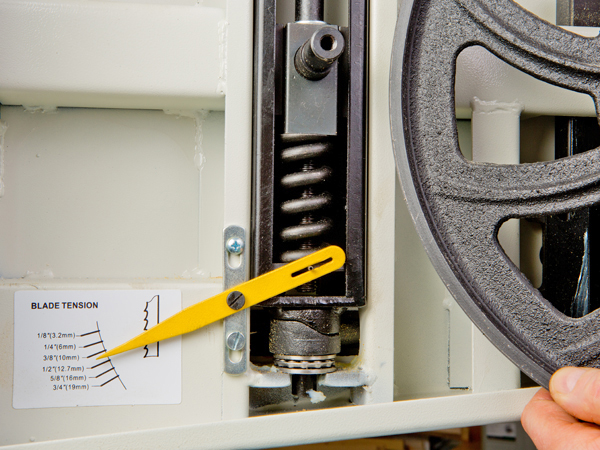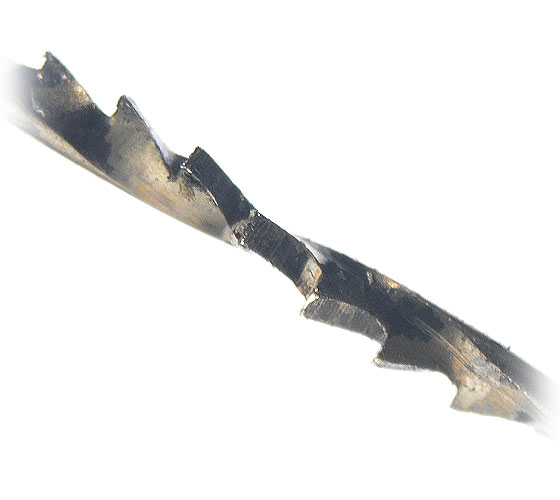Do you love woodworking and own a bandsaw? Have you ever experienced the frustrating problem of your bandsaw blade twisting? Well, fear not! In this article, we’ll delve into the reasons why your bandsaw blade might be twisting and some simple solutions to get you back on track. So, let’s dive in and unravel the mystery!
Picture this: you’re in the middle of a woodworking project, confidently guiding your board through the bandsaw, when suddenly you notice that the blade is veering off course. What’s going on? One possible culprit could be blade tension. If the tension is too tight or uneven, it can put stress on the blade, causing it to twist. But fear not, because we’ve got some tips and tricks to help you properly adjust the tension and straighten things out.
Another common reason for blade twisting is improper blade alignment. Just like a misaligned car, a misaligned blade can throw everything off balance. It’s like trying to walk in two different directions at once – it just won’t work! But don’t fret, because we’ll show you how to align your bandsaw blade with precision, ensuring smooth and accurate cuts every time.
So, whether you’re a seasoned woodworker or just starting out, understanding why your bandsaw blade twists is essential for the success of your projects. By the end of this article, you’ll be armed with the knowledge and know-how to tackle this issue head-on and get your bandsaw back in tip-top shape. Let’s get started, shall we?

Why is My Bandsaw Blade Twisting?
Introduction: Bandsaws are versatile tools that are commonly used in woodworking and metalworking, but sometimes, users may encounter issues with the blade twisting. This can be frustrating and impact the quality of the cuts. In this article, we will explore the reasons behind why bandsaw blades twist and provide some tips to prevent and resolve this issue.
Common Causes of Bandsaw Blade Twisting
1. Incorrect Blade Tension:
One of the main reasons for blade twisting is incorrect tension. If the blade is under-tensioned, it can lead to vibrations and insufficient control over the blade, resulting in twisting. On the other hand, over-tensioning the blade can lead to excessive strain, causing it to twist during operation. It is essential to follow the manufacturer’s guidelines and adjust the tension accordingly for optimal performance.
Additionally, periodically checking the tension during use is crucial, as the blade can naturally loosen over time due to heat and metal fatigue. Regular maintenance and blade tension adjustments can help prevent twisting issues.
2. Blade Tracking Issues:
If your bandsaw blade is not properly aligned and centered on the wheel, it can lead to twisting. This can occur if the blade is not installed correctly or if the tracking adjustment is off. It is essential to ensure that the blade is tracking properly before starting any cutting operation.
Check the guides and rollers to ensure they are properly adjusted and provide proper support to the blade. Misaligned or worn-out guides can also contribute to blade twisting. Regular inspection and adjustment of the guides and tracking mechanism are necessary to maintain smooth and accurate cuts.
3. Improper Blade Selection:
Key Takeaways: Why is My Bandsaw Blade Twisting?
- A bandsaw blade might twist due to improper tensioning.
- Incorrect blade installation can also lead to blade twisting.
- Blade damage or dullness can cause excessive twisting.
- Using the wrong blade width or tooth set can contribute to blade twisting.
- Material being cut may have internal stresses that cause blade twisting.
Frequently Asked Questions
Have you noticed that your bandsaw blade is twisting? Don’t worry, you’re not alone. Many woodworkers encounter this issue with their bandsaws. Here are some commonly asked questions and answers to help you understand why your bandsaw blade is twisting and how to fix it.
1. What causes a bandsaw blade to twist?
There are a few factors that can cause your bandsaw blade to twist. One common reason is improper tensioning of the blade. If your blade is not tensioned correctly, it can lead to twisting during use. Another cause could be the blade’s alignment with the wheels. If the blade is not properly aligned, it can cause twisting as well. Additionally, excessive feed pressure or dull/blunt teeth on the blade can also contribute to twisting.
To prevent twisting, make sure to properly tension your blade, align it correctly with the wheels, and regularly maintain the teeth of the blade to ensure optimal performance and prevent unnecessary twisting.
2. How can I properly tension my bandsaw blade?
Tensioning your bandsaw blade correctly is crucial to prevent twisting. Start by releasing the tension on the blade and then adjust the tension according to the manufacturer’s specifications. Most bandsaws have a tension knob that can be adjusted to achieve the proper tension.
To ensure proper tension, use a blade tension gauge or rely on the manufacturer’s recommended tension setting, which is usually based on the blade’s width. Avoid over-tensioning, as this can lead to premature blade wear or even breakage. Regularly check and adjust the tension to maintain optimal performance.
3. Is blade alignment important for preventing twisting?
Yes, blade alignment plays a critical role in preventing twisting. If your blade is not properly aligned with the bandsaw’s wheels, it can cause the blade to twist during operation. To align your blade, first, make sure the guides and bearings are properly adjusted. Then, adjust the tracking knob or bolt to center the blade on the wheels. Check that the blade runs smoothly and without any wobbling.
Regularly inspect the blade alignment and make adjustments as needed to maintain a straight and true cut and prevent twisting.
4. Can feed pressure affect blade twisting?
Excessive feed pressure can indeed contribute to blade twisting. When pushing the material into the blade too forcefully, it can cause the blade to deflect and twist. This is particularly true if the blade is not properly tensioned or if the teeth are dull or blunt.
Use a steady and consistent feed pressure when cutting materials with your bandsaw. Avoid forcing the material into the blade and let the blade’s teeth do the work. Ensure the blade is properly tensioned and sharpened for the best results and to minimize the risk of twisting.
5. How often should I check and maintain the blade to prevent twisting?
Regular maintenance is crucial to prevent blade twisting. It is recommended to check the tension of the blade before each use or at least every few hours of operation. This ensures that the blade remains properly tensioned and reduces the likelihood of twisting.
In addition to tension, regularly inspect the blade for any signs of dullness, damage, or wear. Sharpen or replace the blade as needed to maintain optimal cutting performance. Keeping the blade in good condition will help prevent twisting and ensure clean and accurate cuts.

Summary
If you’ve been wondering why your bandsaw blade keeps twisting, here’s what you need to know. When the blade is not properly tensioned, it can twist and become uneven, resulting in poor cutting performance. Make sure to adjust the tension correctly to prevent this issue.
Another possible reason for the twisting could be the blade’s condition. If it’s dull, damaged, or worn out, it won’t cut straight and may twist. Regularly inspect and replace your bandsaw blade to maintain its effectiveness. By taking these steps, you can keep your bandsaw blade in good shape and ensure smooth cutting every time.
